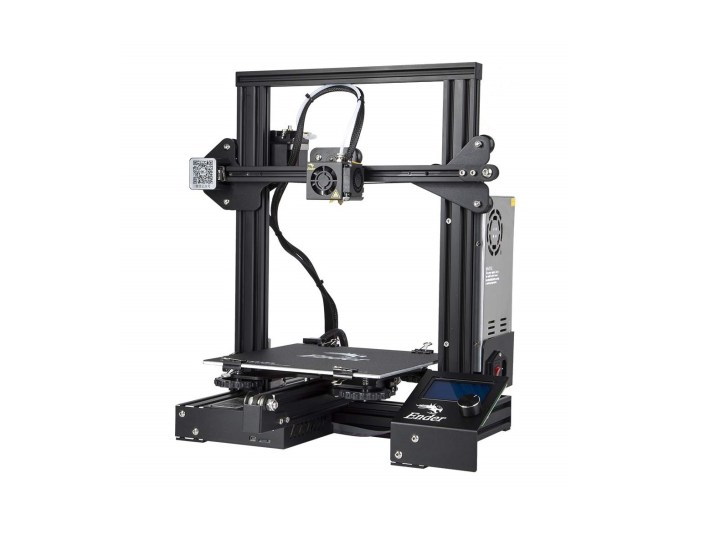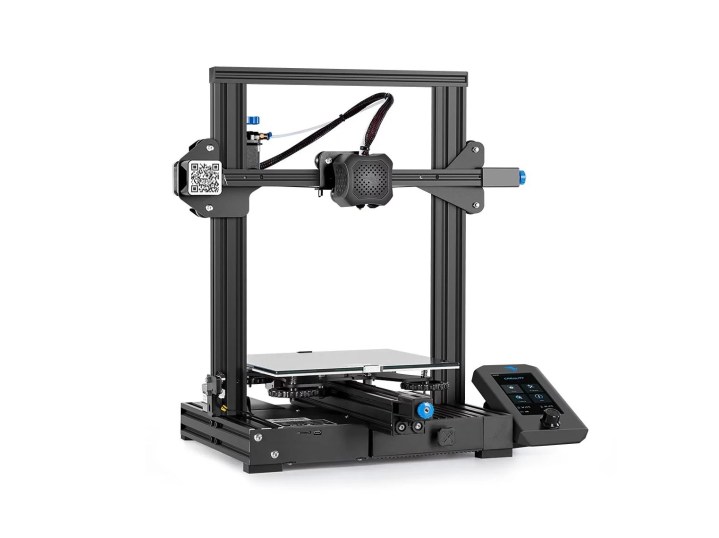If you’ve found yourself venturing into the wide world of 3D printing, there’s never been a better time. This large and growing hobby isn’t as hard to get into as many think, and there are now plenty of reliable and affordable 3D printers on the market. Not to mention, there are a plethora of websites and forums eager to welcome newbies and help you secure exceptional 3D designs — which you can print on your shiny new system. So, whether you’ve yet to dive into this burgeoning community and you’re shopping for your first printer, or you’re already a salty veteran looking to take your prints to the next level, our roundup of the best 3D printer deals is sure to have something to please.
Best 3D printer deals
Anycubic Kobra Go FDM 3D printer — $189, was $320
Excellent for beginners and testing the waters or just doing some low-key prints, this system offers fast printing, a relatively large printing space, auto leveling, and much more. Smart sensors, for example, monitor the printing space, and a power-off resuming function will continue printing right where things left off after an outage or if the filament runs out mid-print. The adjustable knob on the front controls the belt and axis tension and does not require any extra tools to engage — you can do it all by hand.
Creality Ender 3 3D printer — $199, was $269

When you first get most printers, you need to assemble them before use. This system can be put together in about two hours, and it’s relatively easy to do. For functionality, it delivers advanced extruder technology — which reduces plugging risks and bad prints. The resume printing function ensures you can continue your long-form prints even if there’s an outage or system lapse. It heats up quickly too, with the hot bed reaching 110 degrees in just five minutes. It does have an open design.
FlashForge Adventurer 3C 3D printer — $249, was $289

Thanks to a fully enclosed system, with under 50 decibels of sound output during operation, this convenient and ultra-quiet system can handle even complex prints. The removable extruder and both removable and bendable plate, with a detachable nozzle, make it easy to adjust the system on the fly. It’s easier to take down models too because of the plate design, even large models. You can transmit print files to the system wirelessly, via WiFi and cloud printing, or change printing commands via the built-in touchscreen. It’s good for all skill levels beginner to advanced, but also offers some expert-level functions so you can create truly impressive models.
Creality Ender 3 V2 Upgraded 3D printer — $250, was $279

Affordable, with a decent printing volume, and an easy-to-assemble system all describe the Creality Ender 3 V2 with an upgraded design. An effortless filament feed-in makes it easy to keep prints going with ABS materials. Moreover, the silent motherboard keeps the entire system at under 50 decibels of sound production while working — so there’s virtually no noise. The upgraded 4.3-inch smart color screen makes it simple to customize settings, meanwhile, the resume printing function ensures prints continue, on track, after an outage or lapse. It’s a great system for beginner to intermediate printers.
XYZprinting da Vinci 1.0 Pro 3D printer — $400, was $500

This high-resolution printer, rated at 20 to 400 microns, has a heated print bed and open filament design. It offers laser engraving, as well. Features include WiFi connectivity, auto feeding, auto-calibration for headache-free prints, and a fully enclosed printing space to keep your work preserved and protected. You can print from most devices, including laptops, desktops, and mobile (Android only).
How to choose a 3D printer
Modern 3D printers employ one of two manufacturing technologies: Fused deposition modeling (FDM) or stereolithography (SLA). FDM printers are more popular and use a printing medium known as filament. This filament is heated to its melting point and then extruded through one or more printing heads, which move along three axes to create an object layer-by-layer from the bottom up on a heat-dispersing build plate.
FDM printers tend to be the most user-friendly and the filaments they use are also very common and quite affordable, making these 3D printers good for household items and other common projects. Items made with an FDM 3D printer usually have a noticeably striated appearance due to this layer-by-layer building method, but filaments and the printers that use them are improving and growing more capable of handling complex tasks as this technology continues to mature. Most 3D printers you’ll find will be of this design.
Stereolithography, while actually a decades-old technology, is less common due to the greater cost of SLA printers and their proprietary resins (there are a few 3D printers that use resin, but they tend to be on the smaller side). Instead of filament as a printing substrate, SLA printers start with a resin liquid that is hardened via UV radiation as it is molded into the desired shape within the printing chamber. The UV laser is reflected off of mirrors to selectively target the resin that is to be hardened; this is also done layer-by-layer, but in a much different manner than in fused deposition modeling.
Resin-based SLA printers are therefore capable of creating smoother, more detailed, and higher-resolution objects than FDM printers. These resin objects also tend to be considerably more durable. The trade-off here is that SLA 3D printers (and the resins) tend to be more expensive than FDM units, and the proprietary resins are less flexible and messier to work with.
Looking for more great stuff? Find tech discounts and much more on our curated deals page.
Editors’ Recommendations

